Brush–footed Butterflies
(Nymphalidae)
Brush–footed butterflies share a somewhat unusual characteristic: their front legs have evolved to become little more than tiny brushes. This leaves them with four functioning legs, and results in an alternative name: four–footed butterflies.
The brush–footed family, Nymphalidae, is large and contains such commonly seen groups as the fritillaries, crescents, nymphs, admirals, and tortoiseshells.
This material is under development; the identifications and captions are tentative.
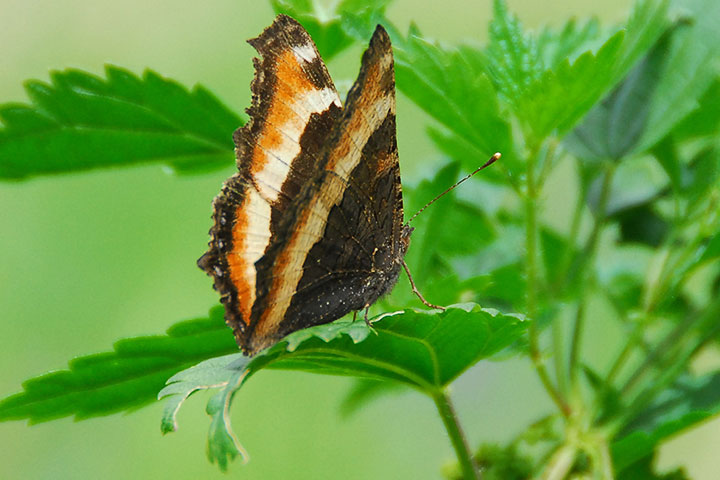 This side view of a Milbert’s tortoiseshell resting on a leaf reveals only two legs on the facing side. The other butterflies on this page share this characteristic, but when they are photographed from above, it isn’t evident. The brightly coloured surface of the upper wing contrasts with the duller, lower wing. When the butterfly rests with its wings up, it looks like a dried leaf—a useful camouflage against birds shared by many members of this family.
This side view of a Milbert’s tortoiseshell resting on a leaf reveals only two legs on the facing side. The other butterflies on this page share this characteristic, but when they are photographed from above, it isn’t evident. The brightly coloured surface of the upper wing contrasts with the duller, lower wing. When the butterfly rests with its wings up, it looks like a dried leaf—a useful camouflage against birds shared by many members of this family.
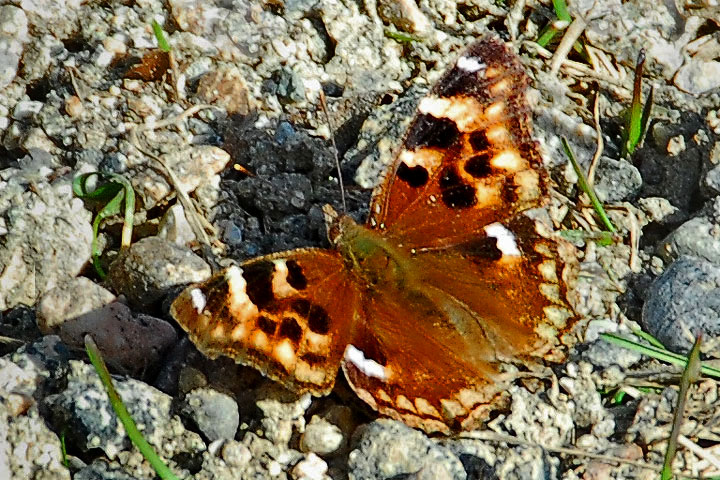 A tortoiseshell, probably a Compton tortoiseshell has splashes of white on its upper wings along with the expected orange and black. This species is common in the interior of the Province.
A tortoiseshell, probably a Compton tortoiseshell has splashes of white on its upper wings along with the expected orange and black. This species is common in the interior of the Province.
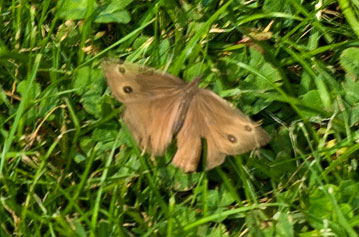 The wood nymphs are small brownish butterflies with two eyespots atop each forewing. The two local species are distinguished by spot size. This is probably a Common Wood Nymph: the lower or hind eyespot is the larger of the two.
The wood nymphs are small brownish butterflies with two eyespots atop each forewing. The two local species are distinguished by spot size. This is probably a Common Wood Nymph: the lower or hind eyespot is the larger of the two.
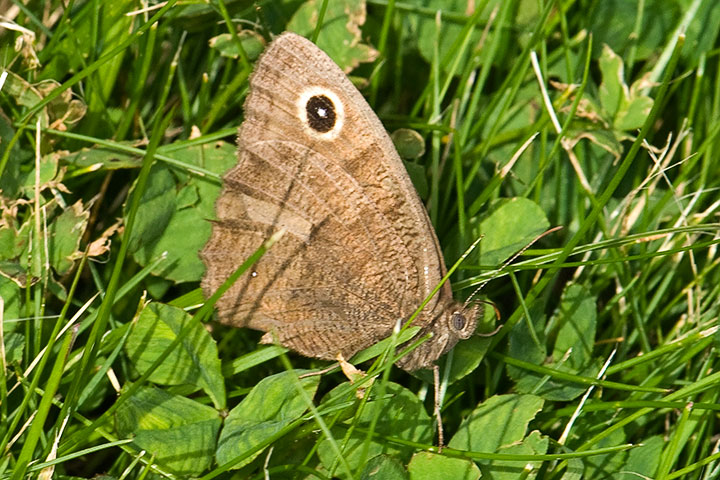 The same Common Wood Nymph as above but a side view. This butterfly favours grassy areas.
The same Common Wood Nymph as above but a side view. This butterfly favours grassy areas.
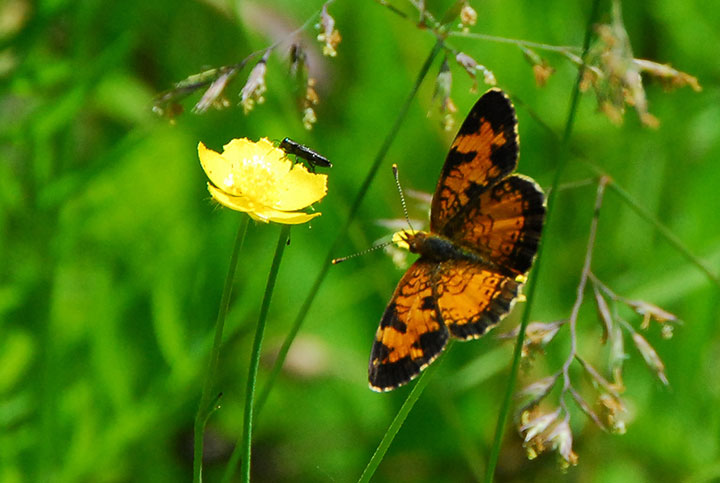 This pair of pictures show what are probably crescents with the Northern Crescent on the left and the Mylitta Crescent on the right.
This pair of pictures show what are probably crescents with the Northern Crescent on the left and the Mylitta Crescent on the right.
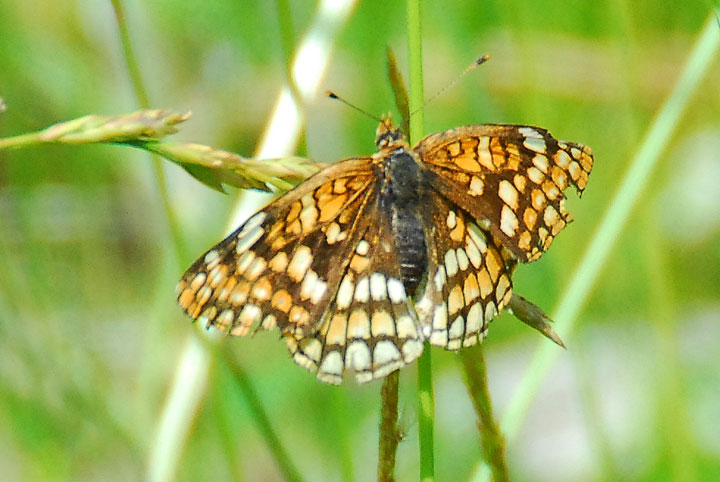 This pair of pictures show what are probably crescents with the Northern Crescent on the left and the Mylitta Crescent on the right.
This pair of pictures show what are probably crescents with the Northern Crescent on the left and the Mylitta Crescent on the right.
 A comma, probably a Oreas Comma, is sipping nutrients from a dead bird. The commas are named for a comma–shaped white mark on the underside of the hind wing. It isn’t visible in this view.
A comma, probably a Oreas Comma, is sipping nutrients from a dead bird. The commas are named for a comma–shaped white mark on the underside of the hind wing. It isn’t visible in this view.
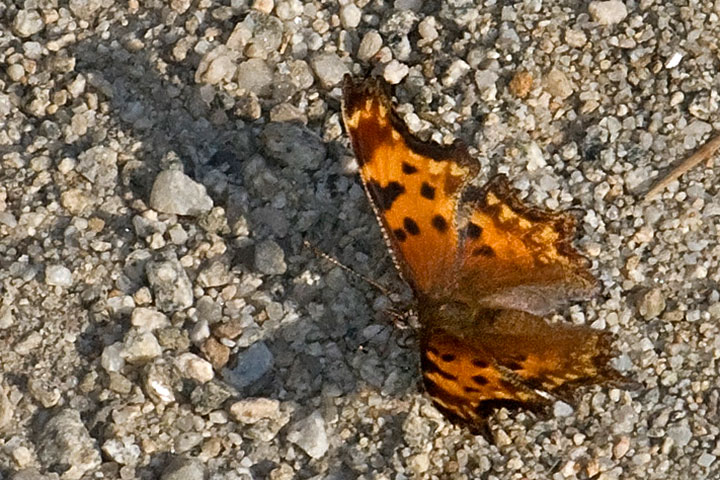 The Hoary Comma is common across the Province. Its upper–wing pattern is like many others in this family, dominantly oranges and blacks.
The Hoary Comma is common across the Province. Its upper–wing pattern is like many others in this family, dominantly oranges and blacks.
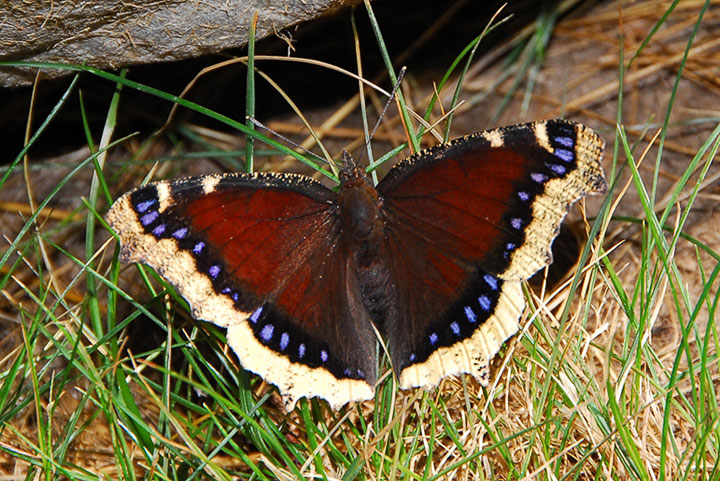 A Mourning Cloak.
A Mourning Cloak.
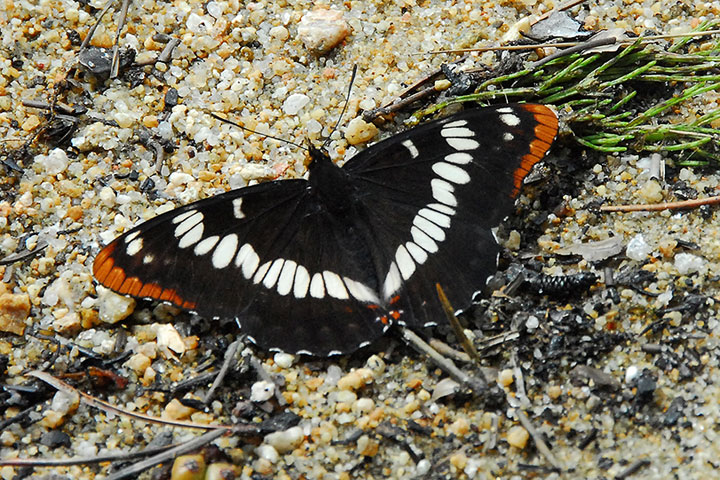 The Lorquin’s Admiral sips nutrients from moist ground.
The Lorquin’s Admiral sips nutrients from moist ground.
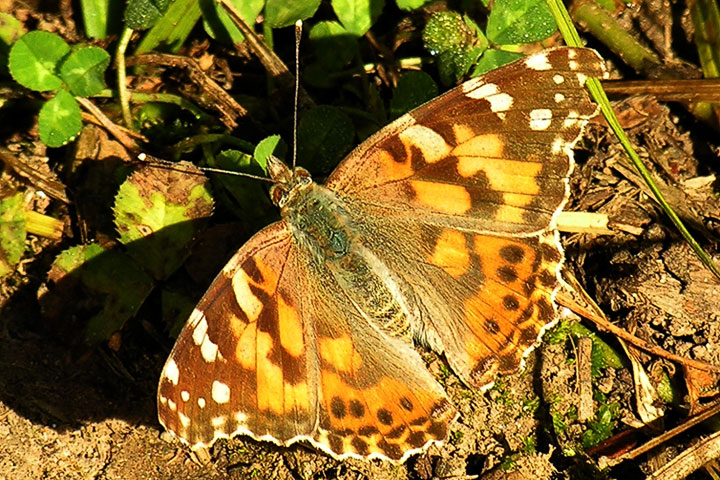 A Painted Lady
A Painted Lady
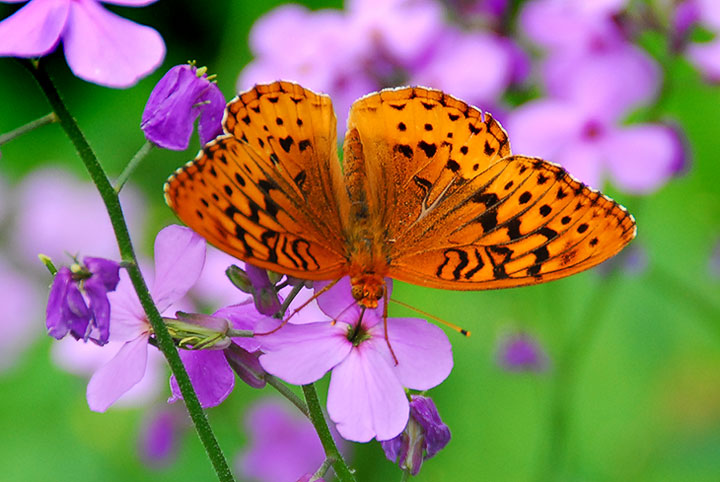 A Great Spangled Fritillary sips nectar from a flower.
A Great Spangled Fritillary sips nectar from a flower.
Information from Wikipedia: Brush–footed Butterflies.
![]()